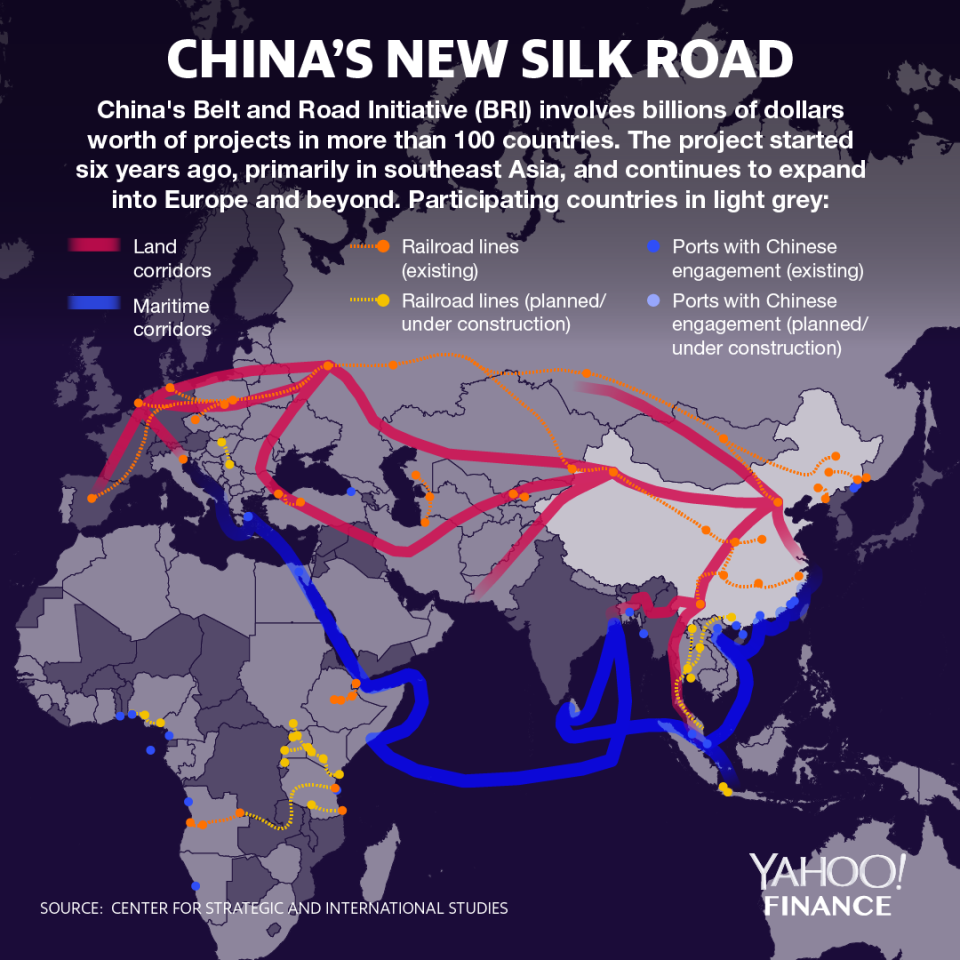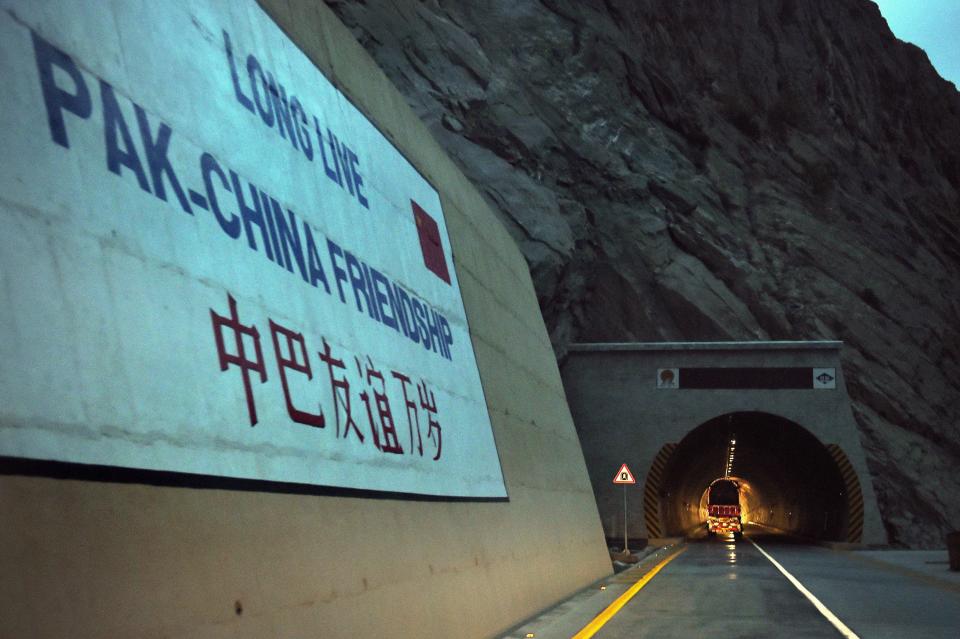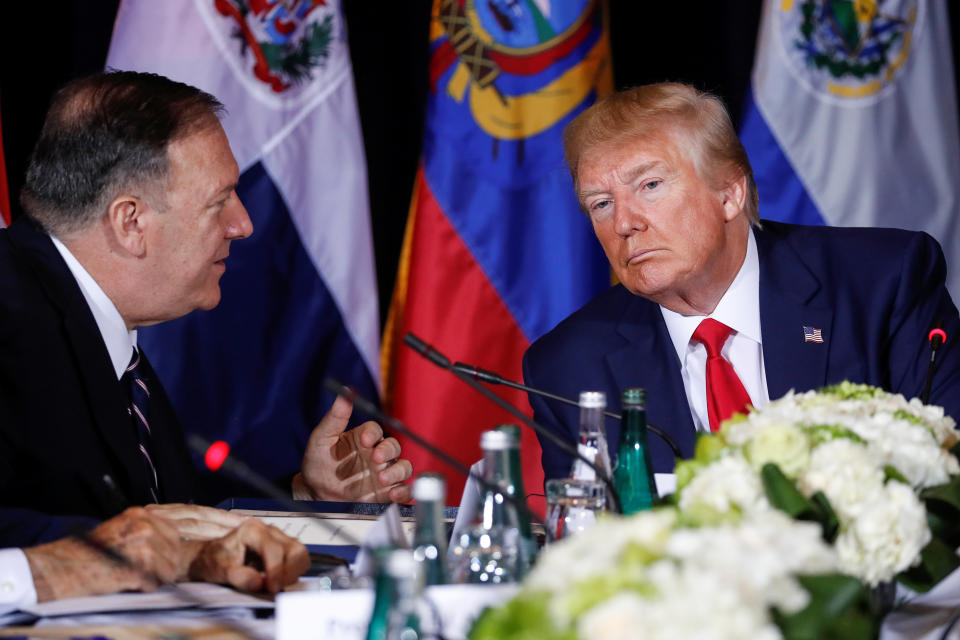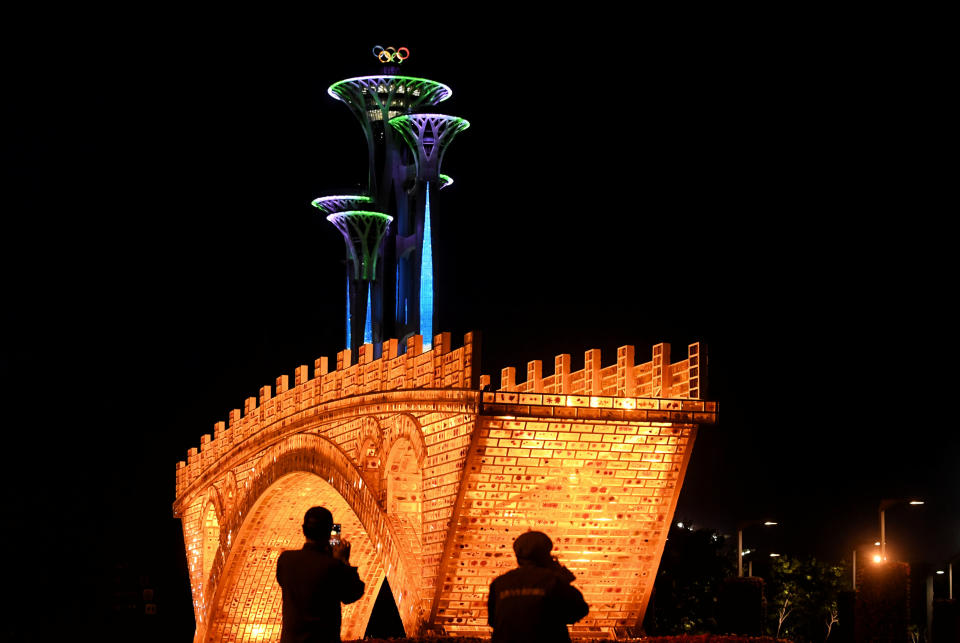The U.S. response to China’s new Silk Road will be a 'legacy of the administration'
This post has been updated.
The U.S. is trying to catch up with China’s massive Belt and Road Initiative (BRI) with a new project that one expert says will be “a legacy of the administration.”
With the creation of a new taxpayer-funded entity called the U.S. International Development Finance Corporation (DFC), which some experts hail as “the most important piece of U.S. soft power legislation in more than a decade,” America is on track to counter China’s colossal project known as the New Silk Road.
“The Belt and Road has really turned into a major focal point for the U.S.,” Andrew Small, senior transatlantic fellow on the Asia program at the German Marshall Fund of the United States, told Yahoo Finance. “The problem has been that [U.S. agencies] haven't really had the means to mobilize resources to compete.”

China’s BRI, envisioned as the revival of an ancient trading route between Asia and Europe, has been plugging away since its President, Xi Jinping, announced its launch in 2013. Beyond infrastructure projects like ports and highways, the initiative as seen as one of several ways that China is asserting itself on the world stage.
A recent report by U.S.-China Economic and Security Review Commission stated that in the past year, “Beijing also expanded its global promotion of the Belt and Road Initiative (BRI), increasing military cooperation and exporting its censorship and surveillance technologies to countries under BRI auspices.”
The report also added: “China’s BRI has emerged as the clearest organizing concept behind the PLA’s expanding overseas presence, although the PLA’s exact role in providing security for BRI is not yet known.”
The effort brought countries in Asia, Africa and Latin America, as well as several parts of Central Europe into China’s orbit. Some countries have already kowtowed to Chinese demands, such as not recognizing Taiwan’s independent status. Many others are left with unrealistic levels of debt that they’re unable to repay, such as Sri Lanka, Pakistan and Montenegro.

‘Think of us as an investment bank’
Over the last few years, “the U.S. was inclined to not pay the Belt and Road so much attention,” Small explained. “I think China had kind of hoped that they might be able to engage the U.S. on the Belt and Road somewhat more actively.”
Responding to growing criticism over the BRI, Commerce Secretary Wilbur Ross confirmed in early November that the U.S. will invest and trade more in Asia in an attempt to counter the project. Ross also laid out an initiative called the “Blue Dot Network” which would essentially “evaluate and certify nominated infrastructure projects” based on commonly accepted standards. That move aims to address concerns about the sustainability of China’s projects.

The same week, DFC’s predecessor, Overseas Private Investment Corporation’s (OPIC) announced a new plan to work with Trans Pacific Network to build the “world’s longest subsea telecommunications cable” spanning the Indo-Pacific region. That project appears to be taking on Chinese tech giant Huawei, which is doing something similar as part of the “digital silk road.”
“We want to be able to work with our allies on opportunities like this to kind of show that there are alternatives out there,” OPIC COO Edward Burrier told Yahoo Finance. While huge investments like these are “tough projects to do… I know that's something that we'd definitely like to pursue,” he added.
DFC, which recently announced that it is is now operational, looks to be a massive boost to American efforts.
“In many ways, you can think of us as an investment bank,” Burrier said. “We make investment decisions, we look at the credit and the ability to repay the loans ... we've made money across our portfolio on an annual basis.”
When a project they invest in really takes off and creates jobs and spurs development in the destination country, the payoff is even greater, he added: “We want to make sure that our investments are going to be there for the long haul.”

‘Going to be a legacy of the administration’
Over the years, agencies like OPIC and USAID have played a big part in helping private American companies invest in infrastructure projects in developing countries. Recent examples include Anadarko and AES Corporation investing in big projects in Mozambique and Vietnam, respectively.
But since the scale and size of the BRI have been unprecedented, it has been a struggle to match the Chinese.
“The USDFC is a very positive step, a powerful instance of U.S. bipartisanship that can hopefully continue and help shape a longer-term strategy for dealing with China,” Jonathan Hillman, senior fellow at CSIS told Yahoo Finance. “The USDFC's impact will hinge on whether it can unlock private sector financing, where the real resources reside.”
Nevertheless, it is apparent that the USDFC is an attempt to counter China.
China was “very much foremost on the minds of both the administration and Capitol Hill,” Burrier said about the plans. “I really do believe fully that as far as U.S. engagement abroad in this administration, this is going to be a legacy of the administration.”
—
Aarthi is a writer for Yahoo Finance. She can be reached at aarthi@yahoofinance.com. Follow her on Twitter @aarthiswami.
Read more:
Digital silk road: How China is creating a new global data highway
Read the latest financial and business news from Yahoo Finance
Follow Yahoo Finance on Twitter, Facebook, Instagram, Flipboard, SmartNews, LinkedIn, YouTube, and reddit.

